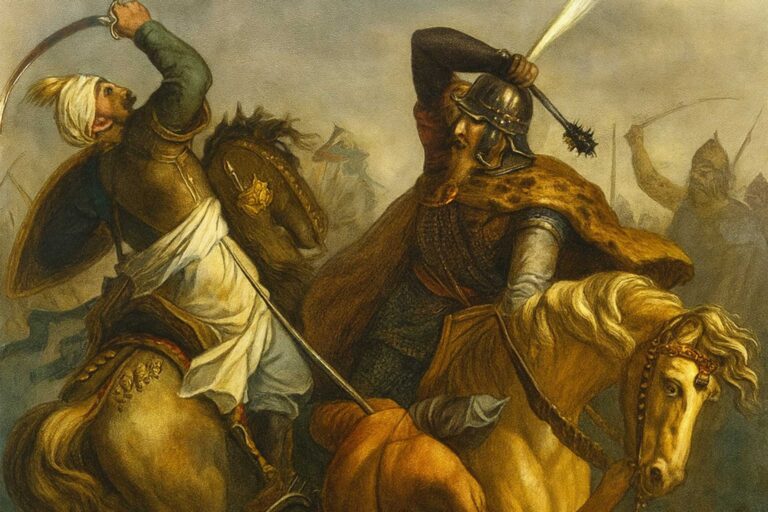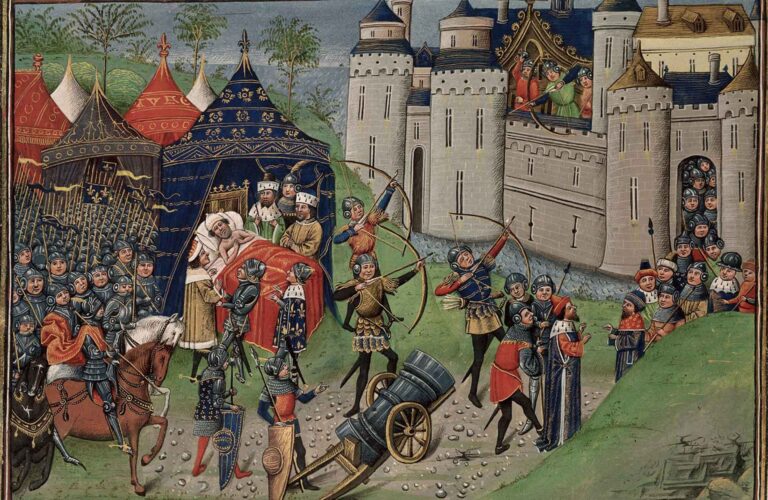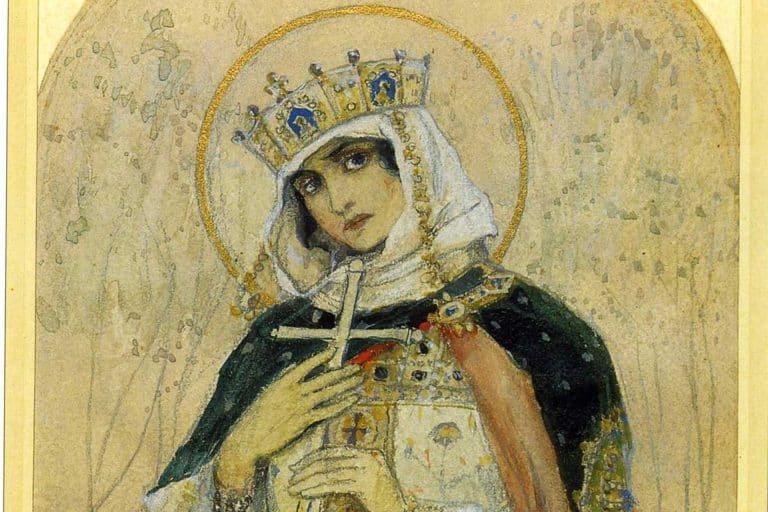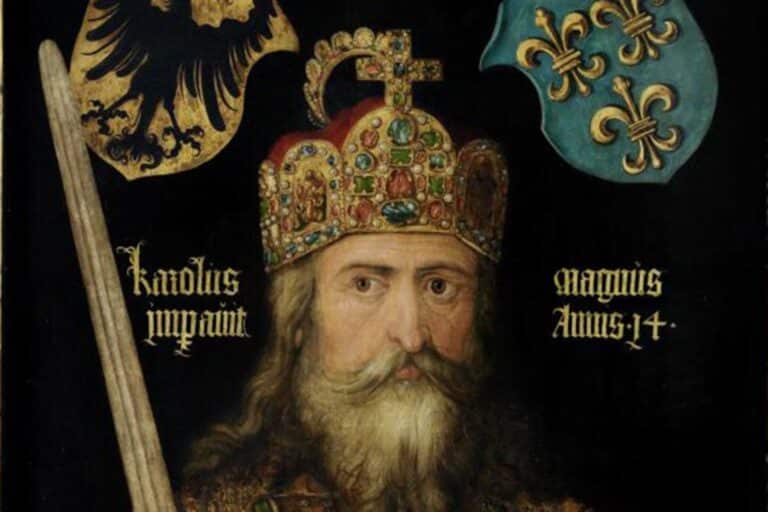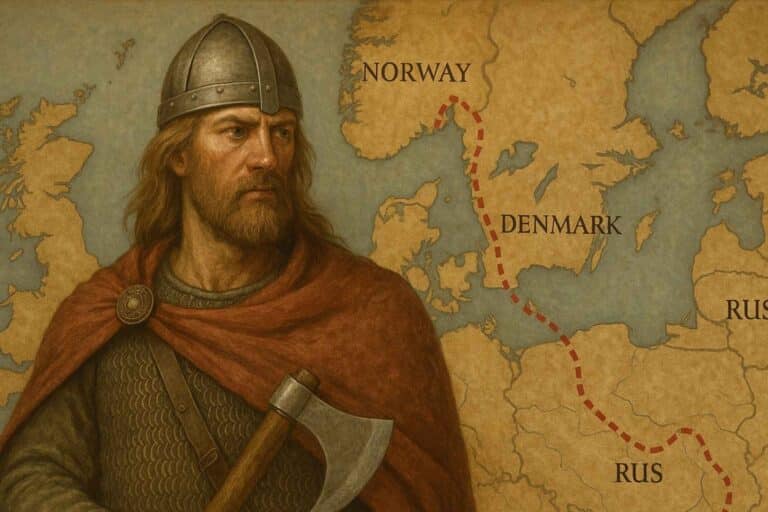The Sons of Ragnar Lothbrok: History & Legend
The sons of Ragnar Lothbrok are among the most enigmatic and legendary figures of the Viking Age. Straddling the line between myth and history, their exploits have been chronicled through sagas, medieval chronicles, and modern interpretations. According to the Tale of Ragnar’s Sons (Ragnarssona þáttr), Ragnar’s children became some of the most infamous and feared warriors in the Norse world. From Bjorn Ironside’s legendary raids to Ivar the Boneless’s command of the Great Heathen Army, these brothers left an indelible mark on early medieval Europe.
While their legendary status often overshadows their historical counterparts, many historians believe the sagas are grounded in fact. As the Anglo-Saxon Chronicle records in 865 CE, “a great heathen army” descended upon England – an army led, according to tradition, by Ragnar’s vengeful sons.
Eirik and Agnar: The Forgotten Sons of Ragnar Lothbrok
Eirik and Agnar (Old Norse: Eiríkr, Ágnarr) were two of the eldest sons of Ragnar Lothbrok. They were born to Ragnar’s wife, Lagertha, the shield-maiden. They are the subject of several Norse sagas, most prominently Ragnarssona þáttr. Little is known about Eirik and Agnar, and they are rarely mentioned in sagas when compared to their famous brothers. The Ragnarssona þáttr tells of Eirik and Agnar being born to Ragnar and Lagertha and growing up in the art of war.

The two led an invasion into Sweden to increase their father’s holdings and establish their own reputations as leaders. In their first engagement, however, they are defeated by the Swedes and both are killed. According to the saga, they were killed by the Swedish King Eysteinn Beli, who was previously placed on the throne by Ragnar during an invasion. Agnar is killed in the battle, but Eirik survives and is captured by King Eysteinn. Eysteinn offers to spare Eirik if he surrenders, but Eirik asks instead to be allowed to die by the sword.
The saga claims that when Eysteinn beheaded Eirik, many of his men felt pity for him and promised to avenge his death. Eirik and Agnar’s deaths laid the groundwork for their younger brothers to avenge their deaths, with Ivar, Hvitserk, and Bjorn all going on to great success.
Bjorn Ironside: The Viking Explorer and King
Bjorn Ironside, also spelled Bjǫrn Járnsíða, is said to have been the oldest surviving son of Ragnar Lothbrok. He is mentioned in many Norse sagas as well as the Frankish chronicles and is characterized as a fearless warrior and a power-hungry explorer. He is described in the Saga of Ragnar Lothbrok as headstrong and a shrewd man who is able to command vast fleets in uncharted waters. In the Chronicle of Regino of Prüm, he is described as raiding the Mediterranean and at one point his fleet reached the coasts of Italy and possibly even ventured to North Africa. He is said to be among the most widely-traveled Vikings of his time.
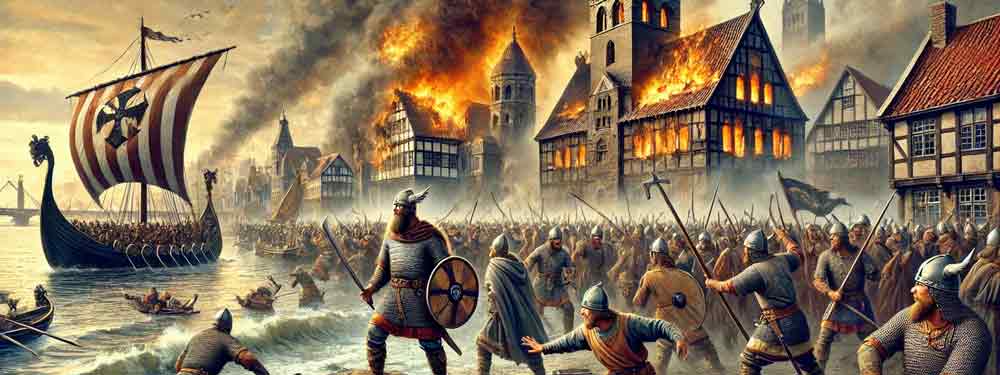
He is also said to have returned to Scandinavia, where he ruled and eventually founded a dynasty in Sweden. He is considered the founder of the Munsö dynasty, which was responsible for several future Swedish kings. While some details of his life cannot be confirmed, it is recorded that a Viking named Bjorn did, in fact, lead a series of raids that ransacked Frankish and Mediterranean coasts in the 9th century.
His grave is said to be on the island of Munsö, where a large burial mound marks the spot of one of the most noted Sons of Ragnar Lothbrok. In the end, whether fact or fiction, Bjorn Ironside is remembered as a warrior-king who left his mark on all the coasts of Europe.
Hvitserk: The Enigmatic Warrior in Ragnar’s Legacy
Hvitserk (also spelled Hvitsärk, Old Norse: Hvítaskr and sometimes anglicized as White-shirt or White-Shirt) is one of the sons of Ragnar Lothbrok who is often described as being Ragnar’s most mysterious son. He is frequently described as being a close friend and bodyguard of Bjorn Ironside in most written tales. In the sagas he was a renowned fearless warrior. In The Tale of Ragnar’s Sons, he and his brothers raid and campaign throughout France and Eastern Europe, and explore extensively. Hvitserk’s name means “white shirt”, but the significance of this epithet is not known for certain today.
Hvitserk was sometimes confused with Ivar the Boneless or Sigurd Snake-in-the-Eye. Due to the shared and mixed identities of Ragnar’s sons, some historians have attempted to argue that Hvitserk was not a historical figure but a poetic double of another of Ragnar’s sons. In one tradition, Hvitserk’s death comes as he is burned alive in Kiev by the city’s rulers, having refused to give up. While evidence of his existence is limited, he has appeared so consistently in the Norse legends that it is likely that he did have a part to play, though possibly an obscure one, in the expansion of the Viking Age.

Sigurd Snake-in-the-Eye: The Serpent-Eyed King
Sigurd Snake-in-the-Eye (Sigurðr ormr í auga) is a character from Norse legend, so named for a distinctive mark in his eye said to resemble a snake (or “orm”). Sigurd, the son of Ragnar Lothbrok and Aslaug, is described as having had a peculiar mark in his eye in The Tale of Ragnar’s Sons, and later sources credit him with being a ruler of parts of Denmark, soon after his father’s death. It was believed that the mark was indicative of his destiny and greatness. Various historical and legendary sources further describe Sigurd as having played a significant role in the unification of the Norse lands.
He is also believed to have played a significant role in the early development of the Danish kingdom, with Saxo Grammaticus listing him as one of the early Danish kings in his work, Gesta Danorum. He, his brothers, and other descendants are said to have avenged Ragnar’s death at the hands of Ælla of Northumbria and participated in the Great Heathen Army, with Sigurd ruling in Denmark for a time. His sons and grandsons also went on to play significant parts in Scandinavian legend.
Halfdan Ragnarsson: The Strategic Son of Ragnar Lothbrok
Halfdan Ragnarsson is recognized as one of the most cunning of Ragnar Lothbrok’s sons. He was a driving force behind the Great Heathen Army’s invasion of Anglo-Saxon England in the late 9th century. Chronicles such as the Anglo-Saxon Chronicle refer to a “Halfdene,” generally identified as Halfdan, at the head of Viking forces in a campaign that ended with the conquest of much of Mercia and the fall of Northumbria.
Halfdan was less interested in exploration or raiding than in long-term control of territory. After establishing power in Northumbria, he is thought to have attempted to bring Dublin under Norse rule, with varying accounts of his success. Irish annals record his death circa 877, likely in battle during efforts to control the area. His strategic approach and political maneuvering made him a central figure in the Viking establishment in the British Isles.

Ivar the Boneless: The Most Feared Son of Ragnar Lothbrok
Ivar the Boneless is the most mysterious and chilling of Ragnar Lothbrok’s sons. The saga Ragnarssona þáttr, tells us that he was born with a condition that caused his bones to be unnaturally soft, either a reference to the disease osteogenesis imperfecta or a simple exaggeration. This did not stop him from becoming a bloodthirsty and legendary war leader and tactician. Ivar is the leader most associated with the Great Heathen Army, a large force of Vikings that attacked Anglo-Saxon England in 865. The Anglo-Saxon Chronicle lists Ivar among the commanders of the Viking force that laid waste to and conquered York with a reign of terror. Ivar was unlike his other brothers.
While he may not have been as strong or as tall, he was just as much a source of fear. Some stories even state that Ivar was a master of psychological warfare and that he used fear to conquer those who opposed him. He is credited with killing King Ælla of Northumbria to avenge Ragnar’s death through the gruesome blood eagle ritual though many historians dispute the claim.
The source of Ivar the Boneless’s death is just as shrouded in mystery as his life was. While some sources state that he died in his bed in Dublin around 873, other accounts claim that Ivar died in battle. No matter the case, Ivar the Boneless is a larger than life figure in the annals of Viking history.
Ubba: The Relentless Warrior Son of Ragnar Lothbrok
Ubba was one of Ragnar Lothbrok’s most feared sons, becoming renowned as a fierce warrior and commander. He is named in the Anglo-Saxon Chronicle and other English sources as a key leader of the Viking invasions of England, and played a pivotal role alongside his brothers Ivar the Boneless and Halfdan Ragnarsson in leading the Great Heathen Army. He and his brothers are remembered for their devastating campaigns that wreaked havoc on Anglo-Saxon England in the 860s and 870s.
The Chronicle of Æthelweard records that Ubba was killed in 878 at the Battle of Cynwit by the forces of Odda, the ealdorman of Devon. His death is seen as a significant moment in the resistance against Viking expansion. Ubba’s legacy has been cemented in Norse and English folklore, where he is often depicted as a symbol of Viking ferocity and unrelenting drive for vengeance and conquest.

The Sons of Ragnar Lothbrok: A Legacy That Shaped the Viking World
While the historical existence and the deeds of these sons of Ragnar Lothbrok are difficult to verify, their names and deeds are mentioned in various sources, such as sagas, chronicles, and accounts of battles, which provide insights into their possible historical activities and roles:


